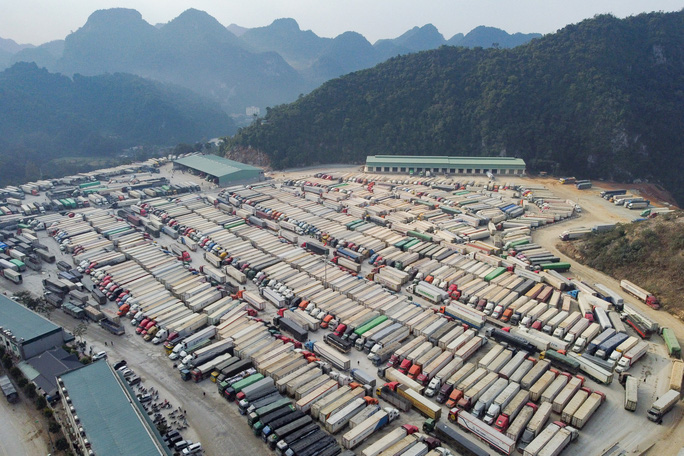Vietnam to diversify markets amid agro-trade dependence on China
Vietnam may seek other key markets, including the EU or US, to mitigate impacts from ongoing trade congestion with China.
The Ministry of Agricultural and Rural Development (MARD) is tasked with diversifying markets and transportation modes for Vietnam’s farm produce in a bid to reduce the country’s agro-trade dependence on the Chinese market.
| Trade congestion remains a major issue for Vietnam in the past months. Source: VGP |
Deputy Prime Minister Le Van Thanh gave the conclusion in an announcement No.08/TB-VPCP on January 10 following a Government meeting on January 8, discussing solutions for trade congestion at Vietnam-China border checkpoints.
Thanh also called for the MARD, the Ministry of Industry and Trade (MoIT), and the Ministry of Foreign Affairs (MoFA) to improve access of Vietnam’s farm produce to other key markets, including the US and EU, especially as harvesting seasons are approaching.
As of January 8, the total trucks being stranded at northern border gates with China was 3,609, some 2,150 fewer compared to 5,800 trucks recorded on December 25, 2021.
A sharp decline in the number of trucks was partly due to a shift towards domestic consumption and export via official trade routes.
While there has been progressing in resolving trade congestion at border gates, Thanh warned growing uncertainties surrounding the Covid-19 situation would further put trade activities at risk.
Thanh also asked Government agencies to work with their Chinese peers in agreeing on a timeframe for customs clearance for both sides, expanding the working hours at border gates, or reopening those that are being temporarily suspended.
The Ministry of Health is responsible for drafting Covid-19 procedures in line with those of China in the border gate zones.
“The goal is to fully clear trade congestion at border gates before the Lunar New Year,” the DPM stressed.
Vice Minister of Transport Nguyen Ngoc Dong said it is entirely feasible for exporting goods and products to China by rail or sea.
“The railway network alone could transport 80 containers per day on the condition of meeting standards for official trade,” Dong said.
Le Quang Trung, deputy general director of the Vietnam Maritime Corporation, added whether a shift in exporting goods from road to sea and railway would be viable depends on the standards and rules of origin.
“Official trade would incur higher costs and complicated administrative procedures,” Trung noted as a reason for businesses to prefer unofficial trade practices.
For thoroughly addressing the ongoing trade bottleneck at Vietnam-China border gates, Thanh urged the MARD to soon draft an overall plan for agro-fishery production that meet safety standards and rules of origin, noting these are key to promote official trade between the two countries, rather than unofficial trading practices of people to people.
“In this case, Vietnam could take advantage of other multimodal transportation models such as railway or maritime for goods transportation,” he said.











